Beautiful elegant shrub, Hydrangea Wims Ed, will become a great decoration of any flowerbeds, a square or a household site.
Unusual large binding inflorescences, blooming from the beginning of summer and to deep autumn, besides three times per season change their painting. Creamy-white, over time, they become pink, and by the end of summer the flowers acquire a saturated burgundy shade.
Such a riot of colorful inflorescences of a chic shrub fascinates and delighted! And if you consider that a perennial plant is rather hardly and unpretentious - it is worth trying to grow an unusually beautiful culture and on its site.
All about landing and leaving the long-life Wims Reducean Hydrangea is in this selection of material.
Hydrangea Vims Red: Features and Interesting Facts
- The history of the appearance of flowering hydrangea in Europe began since 1789, when the English botanist brought a beautiful and magnificent decorative culture from China. Naturally, the extraordinary attractiveness of the blooming perennial quickly gained popularity in many countries and has become the basis for the excretion of variety of varieties.
- The origin of the "Hortensia" flower name is associated with several theories. According to the same data, the exotic plant received its name by the name of the excellent princess of hydrangea - sisters of one of the participants of the Botanical Expedition to East Asia. According to another version, the flower was named after the beloved (hydrangea) of one French doctor. The third theory is trivial, and denotes the translation of the Latin word "Hortensis" as "from the garden", at the place of growing decorative perennial.
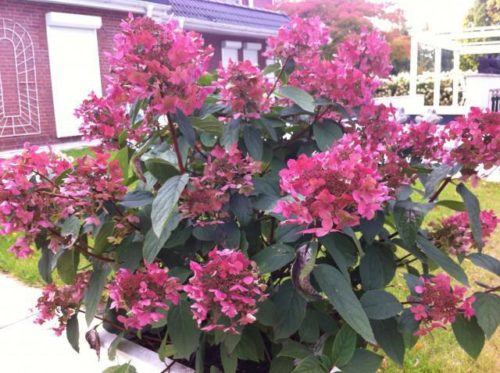
- The gas of hydrangea includes more than 70 species of blooming perennial crops, characterized by the shape of a bush and inflorescence, color of petals and flowering time.
- One of the types of hydrangea, buggy hydrangea, is a slim-flicker-foliage bush with spectacular abundant inflorescences - bulbs (by title). The name of the species is also closely related to the peculiarity of the culture, which in the translation denotes "loving water".
- Hydrangea Paniculata Wim's Red (Hydrangea Paniculata Wim's Red) is not so long ago, but a fairly well-known variety of the extensive moisture-loving type of hydrangea hydrangea from the Hydrangea family is already. This kind was withdrawn by the German breeder Wim Rutten and is distinguished by bright inflorescences blooming before all other varieties and types of hydrangeas.
- The ecology of growing Miscellaneous hydrangea in nature has spread to the region of China, Japan and the southern part of Sakhalin. Currently, Hydrangea Wims is popular in the culture of many countries, including the grade acclimatized and to Russia's conditions.
- In a natural medium, light-loving hortensian shrubs can be seen on forest edges or sparse glads, where sunlight penetrates well.
Hydrangea Wims Red, Botanical Plant Description
- Externally, the perennial has the form of a sprawling low shrub, reaching a height of no more than one and a half meters.
- The roots of hydrangea are not deeply leaving to the ground, but they extend far beyond the diameter of the crown.
- Soothes from shrub straight and hard, brown-red shade, with rare branchings. Annual bloom ensure the shoots of last year. Under the weight of blooming inflorescences, durable shoots are broken, but they can bend, forming an unusual round shape of a shrub.
- Dark green glossy hydrangea leaves are quite large (up to 12 cm long) and a dense, elliptic form, with an opposite location. It seems to see the foliage in the autumn period, when the shades of pink, yellow and purple colors are manifested.
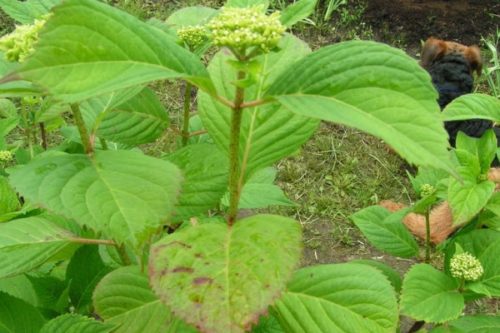
- The most decorative part of the perennial is wide, pyramidal shape, fluffy inflorescences - panicles. Sizes of inflorescences in length reach about 20-40 cm and consist of different flower. Small and early fallen flowers subsequently form fruit, and larger (about 5-7 cm in diameter) Flowers with four petals - sterile (fruitless). The location of flowers at the length of the entire inflorescence creates the overall effect of the openwork and volumetricity.
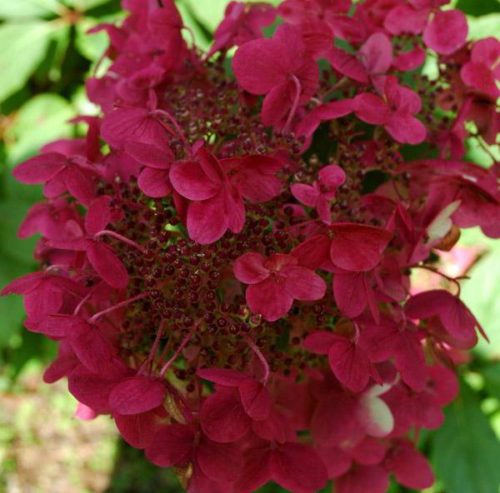
- For the first time, hydrangea blooms aged 4-5 years. A distinctive feature of the variety is an unusual for blooming cultures a three-stage model of flowering, when petals in inflorescence gradually change their painting. At first, in June, the blurred inflorescences are allocated by the snow-white color, which during the summer acquires a pink shade during the summer, and the autumn becomes saturated, burgundy. Even the blurred inflorescences look original and attractive, for which they often use florists in their work when drawing up floral compositions.
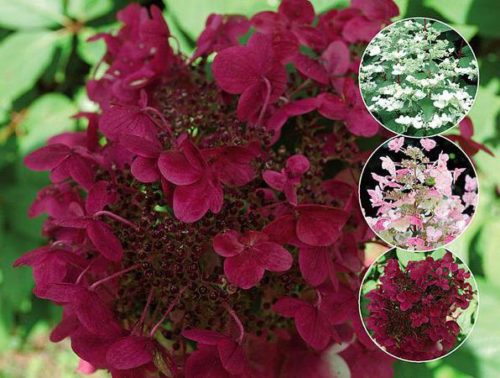
- Blossoms of hydrangea Wims red long and abundant, begins at the beginning of summer and ends in late autumn (subject to the absence of freezers). Unique and sweet scent hydrangea, filling the garden during flowering period by a sweet and pleasant honey "nectar". Decorative blooming perennial declared excellent honeycomb plant.
- The fruit has a kind of shallow box, dropped from the top, with a lot of very small seeds.
- Hydrangea Miscellaneous Wims Red is highly frost. The plant calmly transfers frost to - 30 0WITH.
- The moisture culture, Hydrangea Vims is edited, is ideal for landscaping any landscape zone, including in municipal purposes. Culture perfectly tolerates high codes of cities and can grow for a long time in one place.
- The variety of Hydrangea Wims is rightfully recognized as a long-lived, because he, with favorable conditions and proper care, is able to delight those around 40 to 60 years.
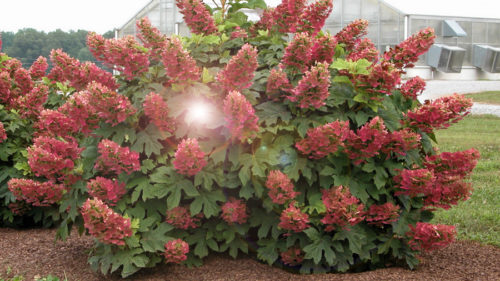
Where to buy Hydrangea Wims Ed? Customer Reviews
Miscellaneous Hydrangea Wims Red, as any other varietal variety, can be purchased in specialized points of sale: in flower shops, specialized online stores, botanical nurseries, on forums from "proven" travelers, etc.
- Reviews of many gardeners and flowers are evidenced by increasingly gaining momentum of the popularity of the Grade "Hydrangea Wims Red". Culture is called one of the best and magnificent among the vast variety of the species.
- Bright and catchy blossom of shrub, pleasant aroma and unpretentiousness in care - the main advantages of many years of flowering culture.
- Of the disadvantages, many gardeners note the need of plants in acidic soil. After all, not every culture will be able to grow close to the area with a similar degree of acidity. But practices quickly found a way out in the current situation: they prepare a special planting pit with sour soil or provide a flower with a neutral pH Wednesday, which involves the successful growth and development of most plants.
- The flowerfish of the middle strip of Russia is mentioned as a lack of hydrangea of \u200b\u200bWims amended the need for winter shelter of the shrub.
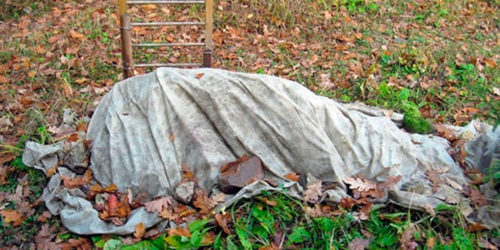
- In any case, the cultivation of hydrangea of \u200b\u200bthis variety will not leave anyone indifferent. Even some troubles associated with the departure of the plant are not darken with the overall charming impression on the wonderful beauty of the long-term shrub.
- It is especially convenient to plant acquired hydrangea seedlings in pots, with a closed root system. Such plants are painlessly tolerance at any time (until the autumn), do not need (in the case of a prolonged fertilizer of the soil) in the subcorter throughout the year and bloom, as a rule, already in the year of planting.
Hydrangea Wims Red, Face Planning
To "beauty Hydrangea" abundantly and long bloom, it is necessary to initially choose the location and conditions for planting a perennial shrub. After all, the process of flowering hydrangea directly depends on the qualitative composition of the soil and the location of the culture.
In addition, it is important to take into account the developing spreading crown of the hydrangea shrub, so closer than 1.5 meters other plants do not land.
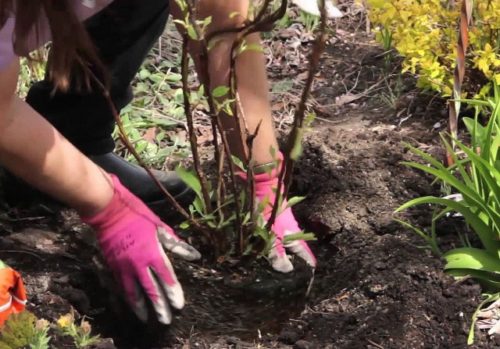
Choosing a place for landing hydrangea Vims Red
- Hydrangea Wims Red prefers acidic or neutral, moistened and, at the same time, loose, well-drained soil. So, a marshy or sandy area is not suitable for growing blooming perennial. It is observed that the acidic or weakly acidic soil environment provides a striking and rich color of the flowering hydrangea. High limestone soil must be acidified; In the soil with an alkaline reaction of the medium, the bush will be bad to grow, fall behind in development and, most likely, will die. A colloid sulfur, iron sulfate, fresh manure or moss-sphagnum is used as an oxidizing agent.
- The blooming shrub is favorably responded to the fertile nutrient soil. To do this, use both mineral and organic fertilizers.
- As for sunlight, scattered light is perfect for shrub. It may be a light half or outdoor sun terrain, with a small shadow appearing at noon. That is, hydrangea is most of the light day should be protected from scoring sunlight. Similar shading can serve artificial obstacles (fences, wall of the house, etc.) or a natural shadow, for example, from the crown of tall trees. Moreover, the shrub is also too close to the trees.
- The plot on which the blooming perennial is planted should be protected from drafts and winds, especially from the northern side. The sharp gusts of the wind adversely affect the processes of growth and the development of shrubs: flowers and foliages are broken, not only the decorative aesthetic appearance of hydrangea, but also the life cycle of many years of culture is disturbed.
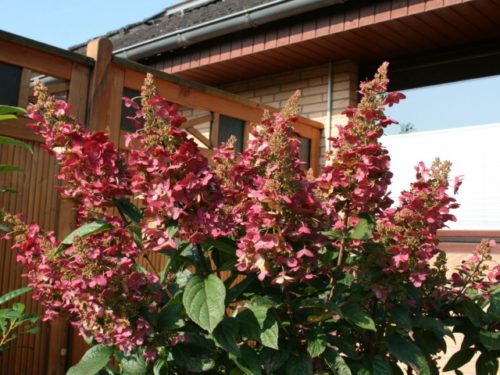
Landing time Vims Red
- Looking out hydrangea in spring or autumn.
- In a warm and moderate climate, experienced flowerflowers recommend to plant young hydrangea bushes in the fall, since after the "winter hardening" plant is better and more actively developing in spring.
- But in the cold regions, it is better to plant seedlings to plan on the spring, so that the bush in the summer as soon as possible and could be painfully transferring the harsh winter.
- In the case of planting a hydrangea seedling with a closed root system, not only the autumn-spring period is suitable, but also summer time.
Agrotechnology landing hydrangea VIMS ed
- Place for landing is better to cook in advance: switch the site, remove weeds, make (if necessary) fertilizer.
- After preparing the soil, dig a landing hole, about half a meter in all directions.
- 2-3 buckets of water poured into the pit and leave overnight so that the soil was well moistened.
- The next day you can proceed directly to planting the plant. It is also best to prepare in advance soil from 2 parts of the turf with peat and the 1st part of humoring with sand. It will not be superfluous to add to such a nutrient substrate also fertilizers: superphosphate, potassium sulfate or urea.
- At the bottom of the pits, the drainage layer is poured, on top of 1 \\ 3 (slide) are being added to the prepared soil. For drainage, you can use broken brick, crumbs, stones.
- Exhibiting a seedlove, gently spread all the roots and, periodically sealing, poured with soil. The roasting neck of the seedling after landing should remain on the surface (approximately at the level of the Earth).
- After planting, the propelled seedling circle is slightly plugged (seal) and watered with water. You can immediately climb the ground with peat or straw.
- If the young seedling falls on the fall - it should be additionally covered for the winter.
Hydrangea Wims Red, plant care
CARE FOR HOLTENSIA WIMS Red will not require a lot of effort, provided the initially correct selected place for planting the plant.
A long-term shrub is especially unpretentious: loves moisture and scattered light, resistant to cold and disease.

Watering and loosening hydrangea WIMS Red
- Moofable hydrangea is very favorably refer to moisture. The surface location of the root system does not allow "to produce" water from the deep layers of the soil, so the plant must be regularly and plenty.
- An objective sign of the necessary irrigation rate will be constantly moistened to the soil around the shrub. In the hot period, irrigation rates increase (up to 30 liters per m 2 Soils), on rainy time - reduce.
- Especially important, watering at the stage after planting a young plant to provide him with quick and successful survival rate in a new place.
- For irrigation, it is best to use resistant water with the addition of a minor number of potassium permanganate (manganese) so that the water is painted in a pale pink color.
- Spraying the shrub can be carried out in a very hot period, to the process of formation of buds. During the rest of the time, hydrangea does not need spraying.
- After irrigation, the rolling circle of shrubs is necessary to shallowly explode.
- An alternative to constant loosening (after irrigations) will be the mulching of the rolling circle sawdust. In addition, the mulch delays moisture and provides the necessary wet microclimate near the shrub.
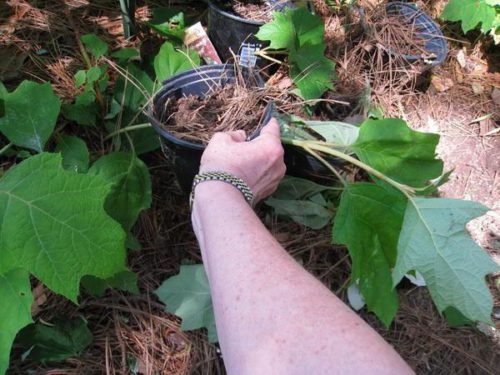
Pruning hydrangea Vims Red
- The increase in young green fictions of hydrangea for the year is about 20-25 cm, so after 4 years of age, the shrub needs regular trimming.
- Careful annual trimming stimulates abundant, long and bright blossom of bush large inflorescences. In addition, trimming allows you to grow neat and tidy chicketer hydrangea.
- Cutting a shrub in the spring, before the start of the downward or, if the time is lost, - during the appearance of the first leaves. An autumn trimming is also practiced during a period of full leaf fall. Then cut cuttings can be used for hydrangea dilution.
- The spring trimming of the stems of an adult shrub, as a rule, is carried out "for three kidneys", cutting almost 2 \\ 3 parts of the shoots. Such a strong trimming allows you to obtain more than 70 magnificent inflorescences on one hydrangea shrub. At the same time, it is important to leave almost not touched by the shoots of last year (where inflorescences will be formed) and the somewhat strongest old branches.
- During trimming, all damaged and dry branches are also removed, cutting them at the base.
- In addition to sanitary trimming, time from time to time is also carried out by the rejuvenating trimming of the bush when they are cut down to stump or many years of trunk. If such a cardinal trimming is too "frightened", you can leave and shorten 4-5 thick branches (up to 10 cm length), removing all the remaining shoots. Hydrangea bush completely restores its decorativeness for the second year of life.
- For hydrangea, it is also possible to use the formative type of trimming, giving a shrub of a spherical, elliptical or tree shape. The procedure is carried out early in spring. With forming trimming, the main thing is to preserve the shoots of last year, ensuring the blossom of the shrub.
- For the formation of a bush in the form of a small tree, all shoots, apart from the main thing, in the summer several times pinch. Later, the side branches are cut on the so-called "ring", and the main escape (early spring) is shortened to a well-developed kidney. After the plant has grown up to 1-1.5 m, - lay the crown: the leading escape is cut off, and the skeletal branches are forming the leading 4-5-th kidneys.
- After flowering in winter florists recommend to cut all the buds to keep the power plants and do not spend them in the formation of seeds. In addition, the winter wind and "snow cap" can easily break the thin shoots with withered buds on them. During the autumn crop and remove all the broken and dry shoots.
- Thus removed hydrangeas shoots twice a year, providing a forming, sanitary and renewal pruning shrubs.
Fertilizing and fertilizer for hydrangeas Ed Weems
- Weems Red Hydrangea grows well in fertile soils, so occasionally needs outside the root feeding and fertilizing.
- The first time "feed up" the culture of the spring, during the formation of inflorescences. The most frequently used organic fertilizer: liquid manure, poultry manure solution. Watering bush whey allow acidify the soil and improve the process of organic matter decomposition.
- The second top dressing to the period of maturing buds. The soil was added physiologically acidic fertilizers: superphosphate, urea and kalisodergaszczye complexes.
- During the active flowering (when all buds fully blossomed) can be accomplished third feeding fertilizers. At this stage of fertilizer will provide a longer period of flowering shrubs.
- The fourth and final nutrient feeding is carried out in the autumn, in the preparation of the bush for the winter.
- Hydrangea seedlings purchased in nurseries are often already contain a long-acting fertilizers and do not need fertilizing during the year.
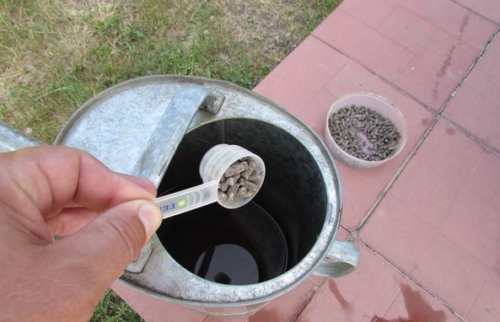
Fighting against diseases and pests Weems Red hydrangea
- Red Hydrangea Weems - resistance to diseases and pests of plants. Sick culture rare, and in most cases - non-compliance with the conditions of perennial care.
- Chlorosis - one of the most common diseases paniculate hydrangea Ed Weems. Especially quickly the disease appears on the background of alkaline soil, while in the bush immediately noticeable fade leaves. Preventive and protective measure will bush watering 1-2 times a month iron salts solution (e.g., iron chelate).
- With the defeat of the bushes hydrangea powdery mildew and anthracnose (leaf spot) appropriate fungicides are applied. Suitable such as "Switch", "Speed", "Maxim", "Chorus", "Radom Gold" or "Quadris."
- When the bush "attack" Colorado beetles and spider mites - useful insecticides, for example, "Akhtar".
Shelter for the winter hydrangea Ed Weems
- Adult culture (at the age of 3-4 years), Hydrangea Wims is distinguished by increased winter hardiness and is able to winter without shelter at temperatures -25-30 0S. The main condition for successful wintering is a fairly high layer of snow cover.
- Young hydrangea seedlings need additional shelter for the winter and mulching of the rolling circle (overwhelming dung, peat or foliage). The roots cover the mulch layer at least 20 cm.
- In cold regions to prevent the shrub from freezing, in addition to the insulation of the root system, the ground part of the hydrangea is also covered. To do this, make a coating frame from a plastic film, rubberoid or burlap. You can also hit the shoots to the ground and, fixing them, to inspire a sweetheart or by any observer material.
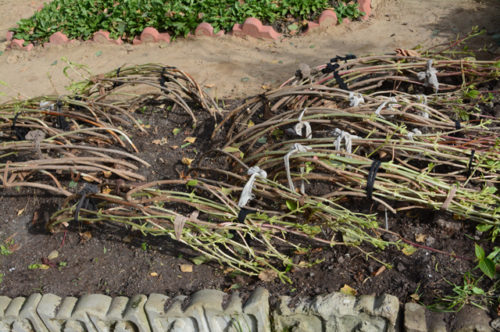
Hydrangea Miscellaneous Vims Red: Premunition Features
Hydrangea Miscellaneous Wims multiplies in several ways: cuttings, decodes and seeds. The last method is little applicable, since very small seeds of hydrangeas have a low germination and a long period of growing full seedlings.
- Hydrangea dilution cuttings should be young - this year. Old shoots are poorly rooted and coming up. As a rule, the workpiece of cuttings begins with the summer (from the end of June) and ends in autumn. Full cuttings should be about 15 cm long and include at least 3 intercosals. The lower cut must be done immediately after the kidney. Prepared fragments of shoots put in water for 2-3 days. For better root formation, flower products use growth stimulants, which are processed by lower cutting cut. Then the cuttings are planted into the container with a peat mixture, with a bleeding by 2 \\ 3 of their lengths. The substrate is regularly moistened with water. In the spring, successfully germinated cuttings planted in an open ground.
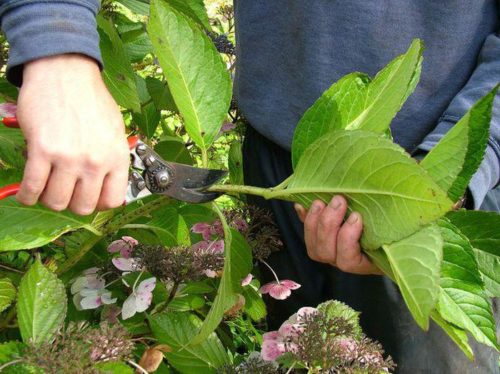
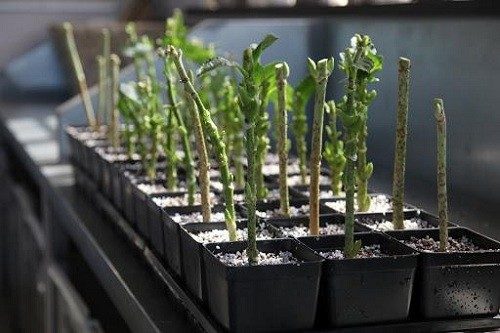
- For drains, spring or at the end of the summer, the lower shrub escape is flexible, which is fixed to the ground with a metal bracket, after which this place is slightly caught and reproduced. It is important to consolidate the tip of the escape (top) in a vertical position. To do this, you can use any support. When the next year, the glands will start the roots - it is separated from the uterine bush and planted on a new place. With proper care, the young bush will bloom in the first year of planting.
Hydrangea Miscellaneous Vims Red in Landscape Design
- Beautiful bushes of long-scale hydrangea are widely used by landscape designers for decorating both urban areas and private sites.
- Speecually and exotic looks of bright busts of hydrangea Wims Red, especially during the change in the color of the color of inflorescences from cream-white on pink, and later - burgundy wine. In the period when there are flowers of all three paintings on the bush, hydrangea looks very elegant and unusual.
- Decorative shrub looks great and brightly, both in a single landing and in group compositions.
- Multi-year hydrangea is used to form alive hedges, decoration of alley or tracks, creating contrasting flower compositions.
- Well combines a universal shrub with many coniferous and leaf falling cultures.
- Cut inflorescences of Hydrangea Vims are used to create original colorful bouquets.
Thus, Hydrangea Wims Red differs in high decorativeness, a long period of flowering, ease of cultivation, lack of labor-intensive care, lifestability and unpretentiousness.

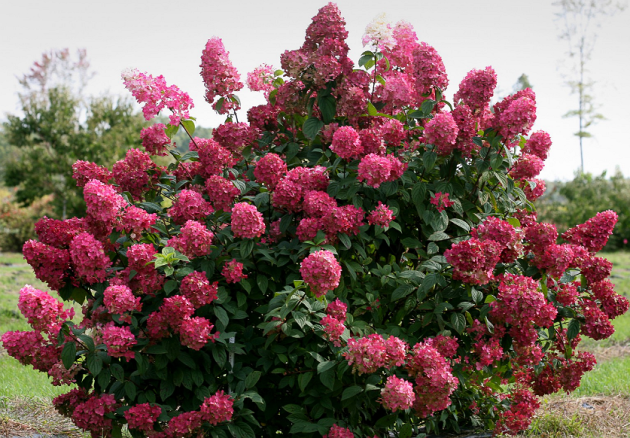
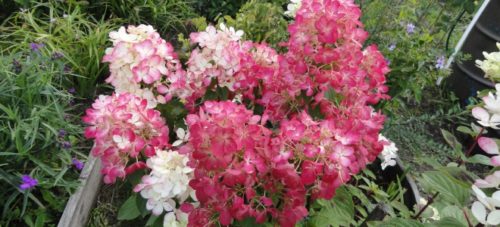
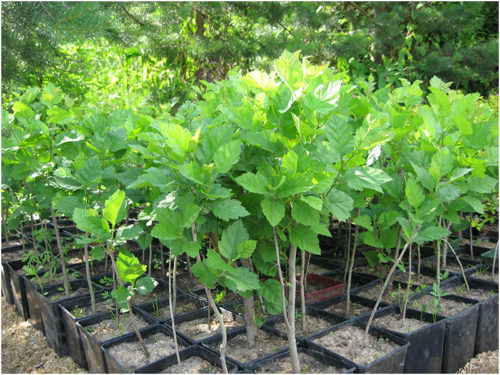
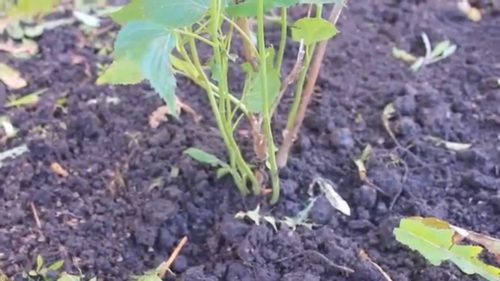
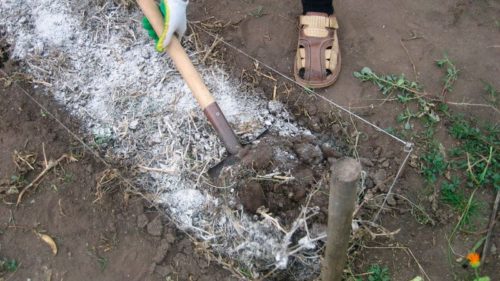
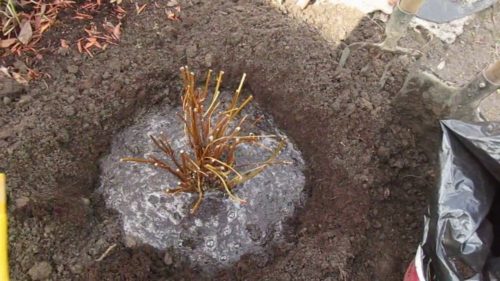
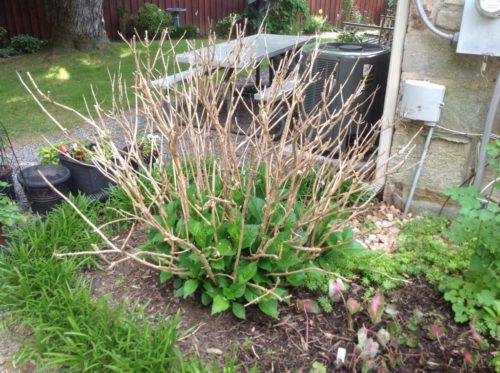

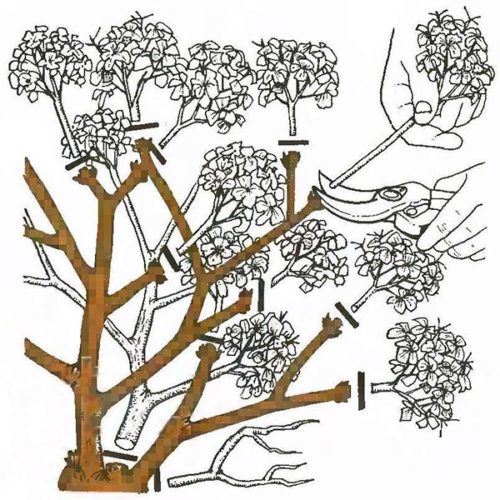
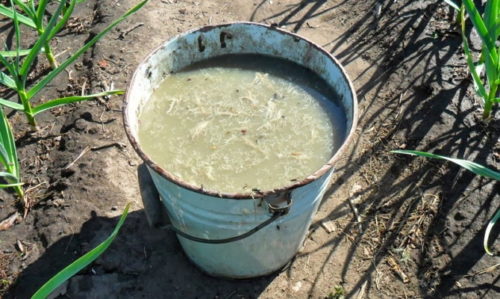

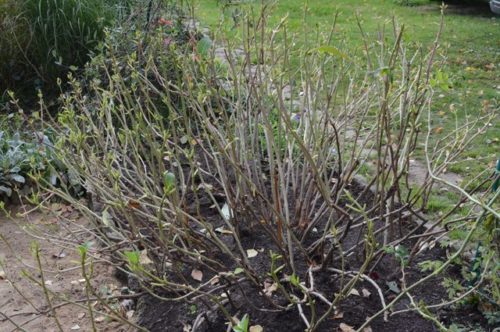
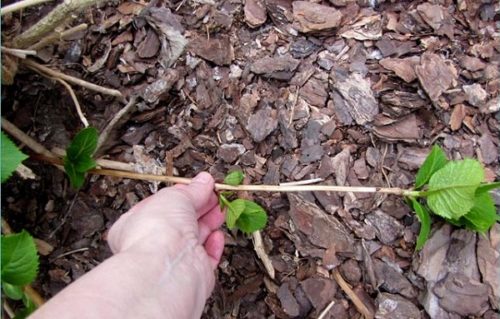
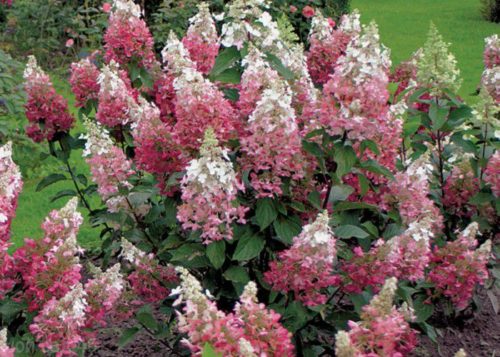
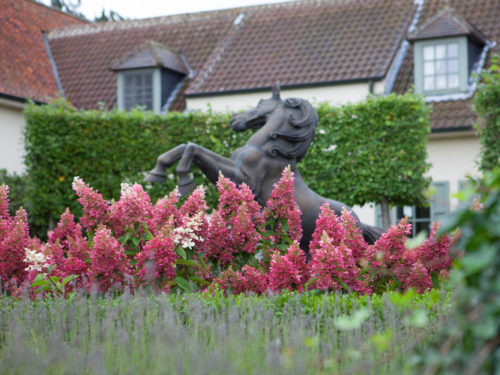
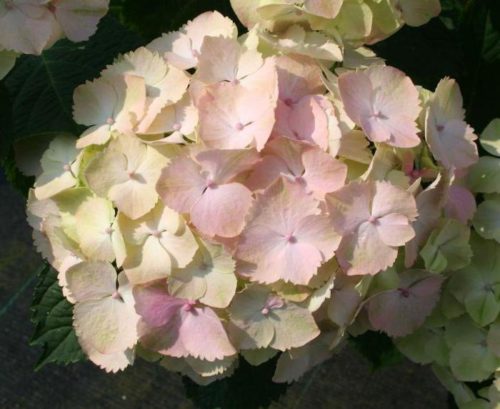
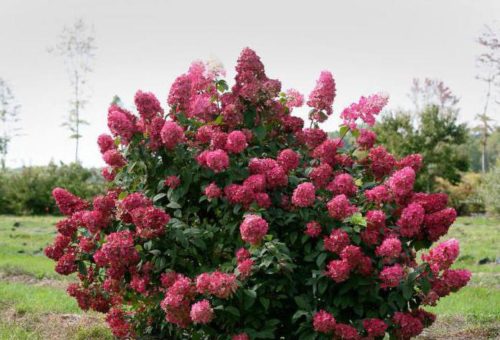
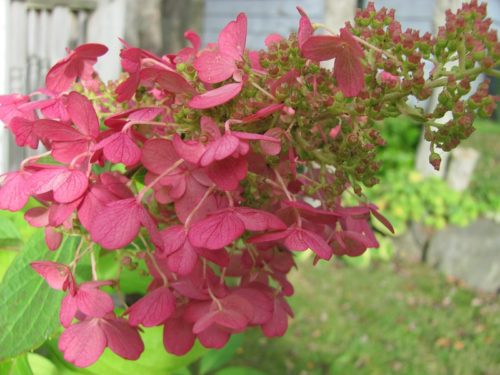












 Start a discussion ...
Start a discussion ...